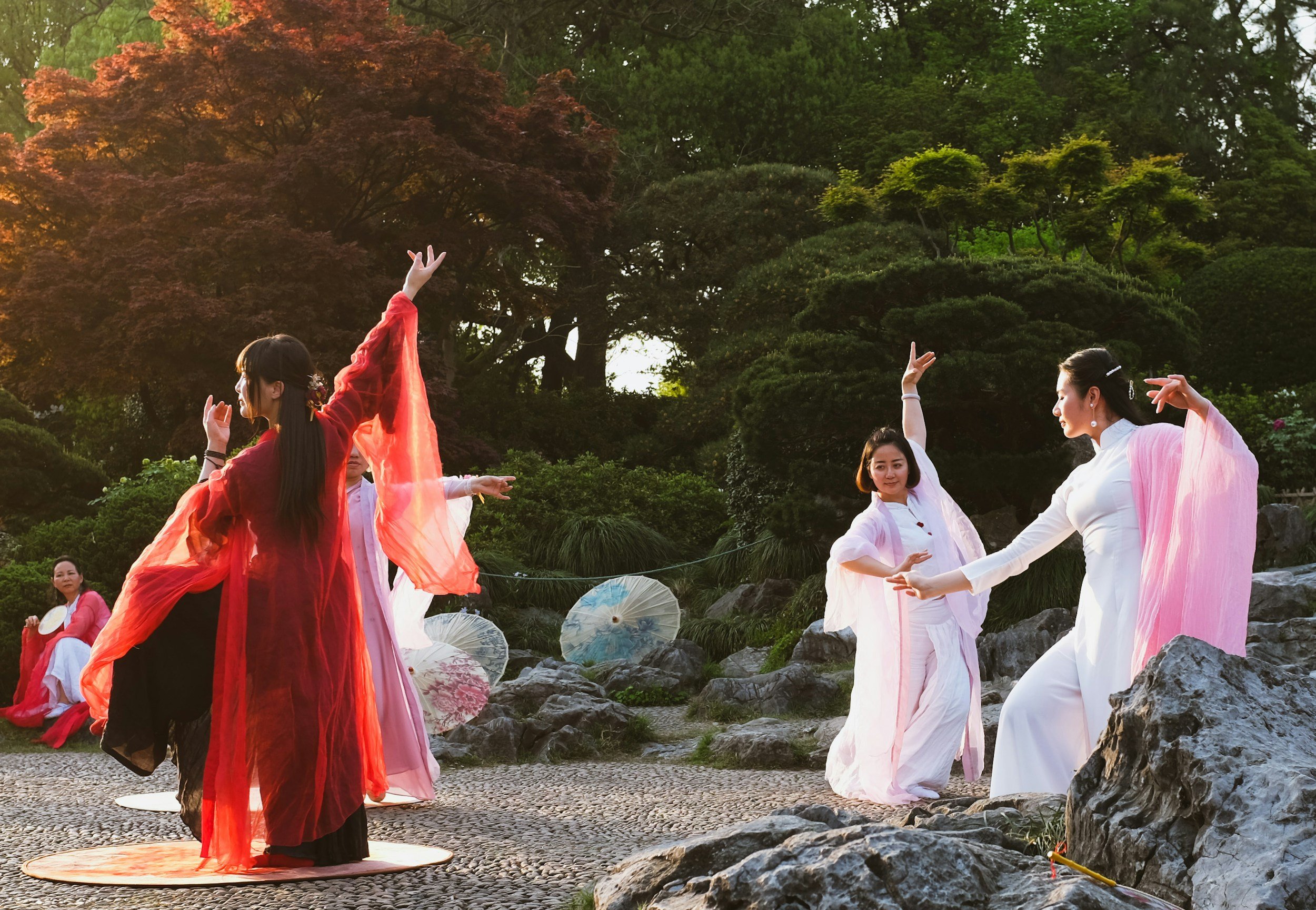
TRADITIONAL CHINESE DANCE
Traditional Chinese Dancing
Traditional Chinese Dancing is a rich and diverse art form that encompasses various styles and forms, each reflecting China's extensive cultural heritage and history. Here’s a glimpse into this captivating dance tradition:
Classical Chinese Dance Classical Chinese Dance is renowned for its graceful, flowing movements and intricate techniques. It combines elements of dance, acrobatics, and martial arts to create a visually stunning performance. Characterized by its emphasis on balance, poise, and expressive storytelling, Classical Chinese Dance often features elaborate costumes and traditional music, highlighting themes from Chinese mythology, folklore, and history.
Folk Dance Folk Dance in China varies widely by region, each with its unique styles and cultural significance. These dances often celebrate local traditions, festivals, and daily life, and they are performed in colorful, traditional costumes. Popular folk dances include the Lion Dance, which is performed during festivals to bring good fortune, and regional dances like the Tibetan Yak Dance and the Miao Butterfly Dance.
Ethnic Dance China is home to 56 recognized ethnic groups, each contributing to the country's rich tapestry of dance. Ethnic dances reflect the diverse traditions and lifestyles of these groups, from the energetic dances of the Mongolian people to the graceful movements of the Han Chinese. These dances are often performed during special occasions, ceremonies, and celebrations, showcasing the unique cultural heritage of each group.
Opera Dance Traditional Chinese Opera Dance is an integral part of Chinese opera performances, such as Peking Opera. It combines dance with elaborate costumes, makeup, and singing to tell dramatic stories. The movements in Opera Dance are highly stylized and symbolic, reflecting the characters' emotions and actions through a combination of dance, martial arts, and theatrical expressions.
Court Dance Court Dance refers to the formal and refined dances performed in imperial courts during China’s dynastic periods. These dances were often performed at royal banquets and ceremonies, characterized by their elegance, precision, and elaborate choreography. Court Dance reflects the opulence and sophistication of the imperial court, with an emphasis on ritual and decorum.
Traditional Chinese Dancing offers a fascinating exploration of China's artistic and cultural heritage, blending grace, storytelling, and historical significance. Each style provides a unique glimpse into the diverse traditions and vibrant history of China, making it a captivating experience for both performers and audiences alike.



